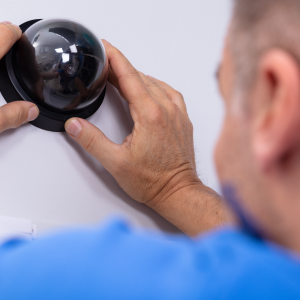- Licensing Training
- Earn CEUS
- Career Programs
- Certifications
- Security Certifications
- Certified Alarm Technician (CAT) Level 1
- Certified Video Systems Specialist (CVSS)
- Certified Video Technician (CVT)
- Certified Systems Integrator (CSI)
- Certified Alarm Technician (CAT) Level 2
- Certified Intrusion Technician (CIT) Level 2
- Certified Service Technician (CST)
- Certified Security Systems Integrator (CSSI)
- Fire Certifications
- Sales Certifications
- Renew Your Certification
- Security Certifications
- About
- Contact Us
- Alabama
- Alaska
- Arizona
- Arkansas
- California
- Colorado
- Connecticut
- Delaware
- Florida
- Georgia
- Hawaii
- Idaho
- Illinois
- Indiana
- Iowa
- Kansas
- Kentucky
- Louisiana
- Maine
- Maryland
- Massachusetts
- Michigan
- Minnesota
- Mississippi
- Missouri
- Montana
- Nebraska
- Nevada
- New Hampshire
- New Jersey
- New Mexico
- New York
- North Carolina
- North Dakota
- Ohio
- Oklahoma
- Oregon
- Pennsylvania
- Rhode Island
- South Carolina
- South Dakota
- Tennessee
- Texas
- Utah
- Vermont
- Virginia
- Washington
- West Virginia
- Wisconsin
- Wyoming
- Licensing Training
- Earn CEUS
- Career Programs
- Certifications
- Security Certifications
- Certified Alarm Technician (CAT) Level 1
- Certified Video Systems Specialist (CVSS)
- Certified Video Technician (CVT)
- Certified Systems Integrator (CSI)
- Certified Alarm Technician (CAT) Level 2
- Certified Intrusion Technician (CIT) Level 2
- Certified Service Technician (CST)
- Certified Security Systems Integrator (CSSI)
- Fire Certifications
- Sales Certifications
- Renew Your Certification
- Security Certifications
- About
- Contact Us
- Core Courses
- Printed Course Material Add-Ons
- Assessments
- Class Templates
- Group Products
- Uncategorized
- Continuing Education Courses
- ESA Fire Certifications
- ESA Security Certifications
- Certified Alarm Technician - Level I
- Certified Alarm Technician (CAT) Level II
- Certified Intrusion Technician (CIT) Level II
- Certified Security Systems Integrator (CSSI)
- Certified Service Technician (CST)
- Certified Systems Integrator (CSI)
- Certified Video Systems Specialist (CVSS)
- Certified Video Technician (CVT)
- ESA Sales Certifications
- States
- Alabama
- Alaska
- Arizona
- Arkansas
- California
- Colorado
- Connecticut
- Delaware
- Florida
- Georgia - Cobb County
- Hawaii
- Idaho
- Illinois
- Indiana
- Iowa
- Kansas - City of Wichita/Sedgwick County
- Kentucky - Louisville
- Louisiana
- Maine
- Maryland
- Massachusetts
- Michigan
- Minnesota
- Mississippi
- Missouri - St. Louis County
- Montana
- Nebraska
- Nevada
- New Hampshire
- New Jersey
- New Mexico
- New York
- North Carolina
- North Dakota
- Ohio
- Oklahoma
- Oregon
- Pennsylvania
- Rhode Island
- South Carolina
- South Dakota
- Tennessee
- Texas
- Utah
- Vermont
- Virginia
- West Virginia
- Wisconsin
- Wyoming
- Washington
- Course Format
Troubleshooting Intrusion Alarm Devices
$35.00

This course provides students an overview of the types of panels and communication methods, burglar system components, powered devices and non-powered devices.
After completing this course you will be able to:
- Identify common troubleshooting issues for intrusion panels
- Define troubleshooting symptoms, problems, and solutions for all 3 methods of connecting devices to the panel
- Identify troubleshooting methods for burglar system components
- Explain troubleshooting symptoms, problems, and solutions for both powered and non-powered devices
Topics Explored
What is an Alarm System?
- Control Panel
Types of Panels and Communication Methods
- Types of Panels
- Conventional Integrated
- Conventional Modules
- Addressable
- Wireless
- Hybrid
- Types of Panels Based on Methods of Communication
- Hardwire
- Wired
- Battery Powered Transmitters
- Supervision
- House Codes
- Wireless – Pros and Cons
- Premise Wireless (RF) Systems
- Line Carrier
- Wired vs Wireless vs Line Carrier
- Components of typical panel
- Memory
Burglar System Components
- Burglar system components
- Input modules troubleshooting
- Output modules troubleshooting
- Multiplexing modules troubleshooting
- Audible devices troubleshooting
- Keypad troubleshooting
- Input devices
Powered Devices
- Active Sensors
- Passive Sensors
- Passive InfraRed (PIR) Sensor
- Characteristics of PIR
- Short range PIR Patterns
- PIR Curtain Patterns
- Long Range PIR Patterns
- Medium Range PIR Patterns
- Ceiling Patterns
- What the PIR Sees
- PIR Sensor Troubleshooting
- Masking Kit Fresnel Lens
- PIR Sensor Troubleshooting
- Outdoor Microwave
Powered Devices (Cont.)
- Microwave Troubleshooting
- Photoelectric Beam
- Single Beam
- Dual Beam Technology
- Photoelectric Beam Troubleshooting
- Combined Technology
- Detection Pattern
- Intruder Path
- Troubleshooting Combined Technology
Old Technology
- Ultrasonics
- Stress Sensors
- Shock or Vibration Detectors
- Troubleshooting Shock or Vibration Sensors
- 3 Methods of Glass Break Detection
- Types of Glass
- Consider Ambient Noise and Vibration in the Environment
- Acoustics Affected by Hardness of the Room
- Piezoelectric and Piezoelectric: On Glass
- Acoustic Glass Break Detectors
- Standard, Dual Frequency, Three Frequency, Multiple Frequency and Dual Microphone Detectors
- Old Technology: Foil
Non-Powered Devices
- Contacts
- Normally Open contacts
- Magnetic Reed Switch
- Contact Gaps
- Balanced Magnetic Reed Switch
- Mechanical Switches
- Troubleshooting magnetic reed switch
Personal Assistance Devices
- Personal Assistance Devices
- Touchpad Activated
- Foot Rail
- Money Clip
- Pressure Mat
- Emergency, Duress or Holdup
- Portable Duress Sensors
What to expect in this course: The presentation includes text, audio, graphics, videos and activities to help you absorb the information presented. This course has a short quiz at the end, which you will be required to pass with a 70% or greater to complete the course.
State Approvals/Recognition
State approvals, include:
AK-CBPL, Sponsor No 16207
AL-Alabama Electronic Security Board of Licensure (AESBL)
CA-Approved through WBFAA. Must submit through WBFAA, conversion fees apply.
LA-Louisiana Office of the State Fire Marshal: Life Safety & Property Protection Advisory Board (LSPPA)
Louisville, KY-Louisville Metro Police Department (LMPD)
MS-Mississippi Office of the State Fire Marshal: Electronic Protection Systems Division
NC-North Carolina Department of Public Safety: Alarm Systems Licensing Board (NC DPS-ASLB)
NJ-State of New Jersey: Division of Consumer Affairs
TX-Texas Department of Public Safety: Private Security Bureau (TX DPS-PSB)
TN-Tennessee Department of Commerce and Insurance: Alarm Systems Contractors Board
WA-State Department of Labor & Industries – Electrical Board. IMPORTANT: To get credit for this course in WA, it must be taken as part of the following bundle: Troubleshooting, Service, and Maintenance CEU Series
Online Courses:
If the student has completed less than ¼ of the course and a request is made to cancel, a refund is available less a 25% administrative fee. Students may choose to transfer their funds to another ESA/NTS provided course if less than ¼ the course has been completed. Transfers will not be issued until the class materials, including the course manual, is returned in like new condition to ESA/NTS. Fund transfers cannot be made to non-ESA/NTS courses due to the varied payment terms established by the Training Providers. Cancellation requests made beyond one-quarter through the course will not be refunded or transferred. Refunds should be expected within thirty days of receipt of returned materials.Live In-Person and Virtual Courses
Provider Cancellation Policy: Training Providers may cancel a class with at least 5 calendar days’ notice to pre-registered students. Classes may be cancelled without advance notice due to weather conditions or other unforeseeable emergencies. The Training Coordinator determines the conditions that constitute an emergency. All monies paid to the Training Provider for a class that is cancelled shall be fully refunded within 14 business days of the cancellation notice. Students may choose to have their monies credited towards another scheduled class. Students should contact the Training Provider for additional terms and conditions regarding their refund policy. Student Cancellation Policy: If a student cancels an ESA National Training School course more than seven days prior to the class, a refund, less a 25% administrative fee, will be issued. In lieu of canceling, a student can opt to transfer their funds to a future course. There are no refunds or transfers permitted within seven days before the class.$35.00

$35.00




